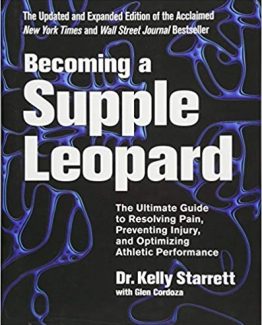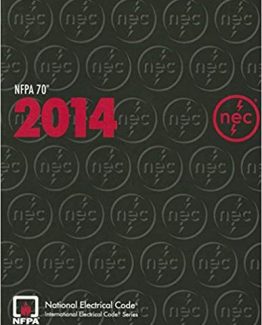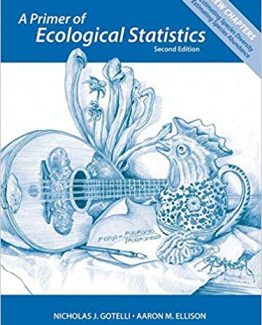Concrete Construction Engineering Handbook 2nd Edition by Edward G. Nawy, ISBN-13: 978-0849374920
[PDF eBook eTextbook]
- Publisher: CRC Press; 2nd edition (June 24, 2008)
- Language: English
- 1584 pages
- ISBN-10: 0849374928
- ISBN-13: 978-0849374920
The first edition of this comprehensive work quickly filled the need for an in-depth handbook on concrete construction engineering and technology. Living up to the standard set by its bestselling predecessor, this second edition of the Concrete Construction Engineering Handbook covers the entire range of issues pertaining to the construction and design of reinforced and prestressed concrete structures.
New and Updated Topics Include:
· The latest advances in engineered concrete materials and special concrete applications including architectural concrete
· Reinforced concrete construction and recommendations on the vast array of types of constructed facilities
· Specialized construction techniques, including the latest provisions of the 2006 International Building Code (IBC) on the design of structures in high seismicity zones
· Design recommendations for high performance and proportioning of concrete structural elements by the latest ACI 318-08 Building Code
· New materials, design of precast seismic bracing systems, and aesthetics of long-span bridge construction
Put 1200 Years of Experience to Work
This new edition contains ten new chapters on the state of the art in emerging areas of concrete construction and design engineering by leading experts. Each chapter examines its topic with detail and depth of discussion and culminates with an extensive list of selected references for the user to consult beyond the scope of the handbook. The thirty-seven contributors are national or international leaders in research, design, and construction with a combined professional practice of at least 1,200 years. The wealth of up-to-date knowledge they provide allows you to design constructed concrete structures that are vastly better, more efficient, and longer enduring.
Table of Contents:
Concrete Constituent Materials, S. Mindess
Introduction
Portland Cement
Modified Portland Cements
High-Alumina Cement
1Performance of Different Cements in Concrete
Water
Water/Cement Ratio
Aggregates
Reinforcement
Durability Considerations
Mineral Admixtures, V.M. Malhotra
Fly Ash
Blast-Furnace Slag
Silica Fume
Highly Reactive Metakaolin
Chemical Admixtures, D.P. Whitney
Introduction to Chemical Admixtures
Retarding Admixtures
Water-Range Water-Reducing Admixtures
High-range Water-Reducing Admixtures
Accelerating Admixtures
Air-Entraining Admixtures
Antifreezing Admixtures
Antiwashout Admixtures
Shrinkage-Reducing Admixtures
Polymer Modifiers and Binder Systems
Alkali Silica Reaction Prevention admixtures
Conclusion
Long Term Effects and Serviceability, E.G. Nawy and H. Nassif
Creep Deformations in Concrete
Creep Prediction
Shrinkage in Concrete
Strength and Elastic Properties of Concrete versus Time
Serviceability Long-Term Considerations
Serviceability Long-term Considerations
Long-term Shrinkage and temperature Reinforcement Controlling Cracking
Autogenous Shrinkage
Properties and Performance of Normal-Strength and High-Strength Concrete, S.H. Kosmatka
Introduction
Workability, Bleeding, and Consolidation
Mixing, Transporting, and Placing Concrete
Permeability
Carbonation
Early Age Characteristics and Strength
Density
Abrasion Resistance
Volume Change and Crack Control
Deformation and Creep
Concrete Ingredients
Proportioning of Concrete Mixtures
Hot and Cold Weather Concreting
Control Tests
Freeze-Thaw and Deicer Scaling Resistance
Sulfate-Resistant Concrete
Corrosion Protection
Alkali-Silica Reaction
Related Standards
Part A: Design of Concrete Mixtures, E.G. Nawy
General
Selection of Constituent Materials
Mixture Proportioning for High-Performance Normal-Strength Concrete (Compressive Cylinder Strength Limit 6000 psi)
Mixture Proportioning for High-Performance High-Strength Concrete (Cylinder Compressive Strength Exceeding 6000 psi)
Part B: Applications and Constructability, J. Moreno and J. Albinger
Applications and Constructability with an Emphasis on High-Strength High-Performance Concrete
Job-Site Control
Testing
Design and Construction of Concrete Formwork, D.W. Johnston
Introduction
Types of Formwork
Formwork Standards and Recommended Practices
Loads and Pressure on Formwork
Formwork Design Criteria
Formwork Design
Slab-Form Design Example
Wall-Form Design Example
Construction Loading in High-Rise Buildings, S. K. Ghosh
Introduction
Construction Loads
Properties of Concrete at Early Ages
Strength Consequences of Construction Loads
Serviceability Consequences of Construction Loads
Codes and Standards
Deflection of Concrete Members, R.S. Fling and A. Scanlon
Introduction
Elastic Calculation Methods
Other Calculation Considerations
Factors Affecting Deflection
Reducing Deflection of Concrete Members
Allowable Deflections
Structural Concrete Systems, S.W. McConnel
Overview
Building Loads
Composite Steel-Concrete Construction
Foundations
Structural Frames
Concrete Slab and Plate Systems
Liquid Containing Structures
Mass Concrete
On-Site Precasting—Tilt-Up Construction
Lift-Site Construction
Slip-Form Construction
Prestressed Concrete
Construction of Prestressed Concrete, B.C. Gerwick
Introduction
Concrete and Its Components
Reinforcement and Prestressing Systems
Special Provisions for Prestressed Concrete Construction
Post-tensioning Technology
Pretensioning Technology
Prestressed Concrete Building
Prestressed Concrete Bridges
Prestressed Concrete Piling
Tanks and Other Circular Structures
Prestressed Concrete Sleepers (Ties)
Prestressed Concrete Floating Structures
Prestressed Concrete Pavements
Maintenance, Repair, and Strengthening of Existing Prestressed Concrete Structures
Demolition of Prestressed Concrete Structures
The Future of Prestressed Concrete Construction
Unbonded Post-tensioning in Building Construction, F.G. Bath
Developments in Unbonded Post-tensioning
General Notes and Standard Details
Evaluation and Rehabilitation of Building Structures
Demolition of Post-tensioned Structures
Concrete for Offshore Structures, G.C. Hoff
Introduction
Types of Concrete Structures
Concrete Quality
Concrete Materials
Concrete Properties
Design Considerations
Safety Considerations
Construction Practices
Construction Locations
Marine Operations
Cost Considerations
Summary
Foundations for Concrete Structures, M. Gunaratne
Foundation Engineering
Site Exploration
Shallow Footings
Mat Footings
Retaining Walls
Pile Foundations
Caissons and Drilled Piers
Special Construction Applications, H. Najm
Introduction
Preplaced-Aggregate Concrete
Underwater Concrete
Vacuum Processing
Portland Cement Plaster Construction
Self Consolidating Concrete (SCC)
Mass Concrete
Roller Compacted Concrete (RCC)
Structural Concrete Repair, R.W. Poston
Introduction
Limit States Design for Repair
Evaluation
Structural Implications
Repair Principles
Repair of Unbonded Post-tensioned Concrete Structures
Construction Issues
Long-Term Repair Performance
Case Study Joints in Concrete Structures, E.G. Nawy
Introduction
Construction Joints
Contraction Joints
Expansion Joints
Joints in Slabs on Grade and Pavements
Pavements
Automation in Concrete Construction, Miroslaw, J. Skibniewski and R. Kunigahalli
Categories of Construction Automation
Automated Construction Equipment and Related Hardware
Economics and Management of Robots
Computer-Aided Design (CAD)
Conclusion and Future Activities
Equipment for Concrete Building Construction, A. Shapira
Introduction
Equipment Selection, General, Example, Soft Considerations
Concrete Equipment: Concrete Mixers, Concrete Pumps, Power Trowels
Cranes: Tower Cranes, Mobile Cranes, Cranes in the Electronic Age
Truck Loaders
Belt Conveyors
Material Handlers
Hoists and Lifts
Mechanized Form Systems
Roller-Compacted Concrete, E.K. Schrader
Introduction
Advantages and Disadvantages
Aggregates and Mixture Proportions
Material Properties
Design
Construction
Nondestructive Test Methods, N.J. Carino
Introduction
Methods to Estimate In-Place Strength
Methods for Flaw Detection and Condition Assessment
Concluding Remarks
Part A: Fiber-Reinforced Concrete (FRC), E.G. Nawy
Historical Development
General Characteristics
Mixture Proportioning
Mechanics of Fiber Reinforcement
Mechanical Properties of Fibrous Concrete Structural Elements
Steel Fiber Reinforced Cement Composites
Prestressed Concrete Prism Elements as the Main Composite Reinforcement in Concrete Beams
Part B: Fiber Reinforced Plastic (FRP), E.G. Nawy
Historical Development
Beams and Two-Way Slabs Reinforced with GFRP Bars
Carbon Fibers and Composite Reinforcement
First Resistance
Summary  Â
Bonded Concrete Overlays, M.M. Sprinkel
Introduction
Key Issues for Successful Bonded HCC Overlays
Other Issues: Rapid Construction of Overlays, Overlays Cost, Service Life
Summary
Engineered Cementitious Composites (ECC) – Mechanical and Durability Properties, V.C. Li
Historical development
General Considerations– The Family of ECC Materials. Tensile Characteristics. Design Consideration. Compressive and Flexural Characteristics
Mixture Proportioning, Material Processing and Quality Control
Mechanical Properties of ECC Structural Elements – Structural Response of R/ECC Elements.
Insight from R/ECC Element Response.
Durability of ECC and ECC Structural Elements – Material and Element Durability. ECC Durability Under Various Environments. Durability of R/ECC. Long Term Performance
Concluding Remarks
Design and Construction of Fiber Plastics Structures, L.C. Bank
Introduction
Design of FRP Reinforced concrete members
Design of FRP Strengthened Concrete Members
Summary
Geopolymer Concrete, V. Rangan
Introduction
Polymers
Constituents of Geopolymer Concrete
Mixture Proportions for Geoploymer Concrete
Mixing, Casting and Compaction of geopolymer Concrete
Curing of Geopolymer Concrete
Design of Geopolymer Concrete Mixtures
Short-Term Properties of Geopolymer Concrete
Long-Term Properties of Geopolymer Concrete
Reinforced Geopolymer Concrete Beams and Columns
Economic benefits of Geopolymer Concrete
Concluding remarks
Performance Evaluation of Structures, R.A. Miller
Introduction
ACI 318-05 Provisions on Strength Evaluation of Existing Structures
Pretest Planning for Reliable Structural Evaluation
Nondestructive Testing for Material and Structural Assessment
Static / Quasi-static Load Testing
A Discussion of Instrumentation and Data Acquisition
Case Studies in Performance Evaluation of Concrete Structures
Masonry design and Construction, J.J. Thompson
Introduction
Masonry Design and Construction Codes and Standards
Definitions
Materials
Construction
Testing and Inspection
General Detailing
Project Specifications
Structural Design
Summary
Aesthetics in Construction and Design of Long Span Prestressed Concrete Bridges, L. Figg
Aesthetics of Concrete Bridges – Introduction. Bridge Aesthetics. Signature Design. Definition of Design Principles
Conceptual Design – Alignmnet. Span Length. Structural Depth. Span to Depth Ratio Superstructure and Substructure Shapes
Environmental Sensitivity – Protecting the Natural Environment. Context Sensitive Design
Construction Methods – Span by Span. Cable-Stayed Bridges. Urban Environments
Concrete Bridge Shapes for Construction  – Superstructure Shape. Pier Shape. Underside Appearance. Creating Shadows
Concrete Aesthetics Features – Introduction to Color and Texture. Overall Bridge Color and Texture. Opportunities for Aesthetic Treatments. Use of Native Materials
Design Details – Concrete Barriers/New Vistas. Drainage. Utilities. Aesthetic Lighting. Landscaping. Innovative Technologies. Artistic Details
Architectural Concrete, A.R. Kenney, S. Freedman, and J. Shilstone, Jr.
History of Architectural Cast-in-Place Concrete
History of Architectural Precast Concrete
Applications
Planning
Materials—Mixture Design
Color and Texture
Construction—Cast-in-Place Concrete
Production and Installation of Precast Elements
Finish Cleanup
Acceptability of Appearance
Innovations
Fire Resistance and Protection of Structures, J. Thompon and M.B. Hogan
Introduction
Fire Resistance Rating
Fire Protection of Joints
Finish Treatment
Fire Resistance of Columns
Steel Columns Protected by Masonry
Fire Resistance of Lintels
Seismic Resisting Construction, W.M. Naja/Christofer Bane
Fundamentals of Earthquake Ground Motion
International building Code (IBC 2006)
Design and Construction of Concrete and Masonry Buildings
Seismic Retrofit of Existing Buildings
Seismic Analysis and Design of Bridge Structures
Retrofit of Earthquake-Damaged Bridges
Prefabricated Bridge Elements and Systems, M.M. Sprinkel
Practical Applications
Types of Elements
Construction Considerations
Looking Ahead
Design of Precast Seismic Bracing Systems. R.E. Englekirk
Introduction
Basic Concepts: The Development of a Strength Criterion; Creating an Effective Moment Transfer; Creating an Effective Shear Transfer
Precast Concrete Seismic Moment Resisting Ductile Frame System: Bolted Assemblages – Post-Tensioned Assemblages – Interior Beam-Column Joints – Post-Tensioned Assemblies (Hybrid System) – Bolted Assemblies (DDC)
The Conceptual Design Process. Bolted Systems – Post-Tensioned Systems
Concluding Remarks
Cracking Mitigation and Maintenance Considerations, F.G. Barth
Overview of Crack Mitigation
Member Selection
Crack Causes and Types
Crack Mitigation Measures
Crack Evaluation Summary
Maintenance
Proportioning Concrete Structural Elements by the ACI 318-08 Code. E.G. Nawy
Material characteristics
Structural Design Considerations
Strength Design of Reinforced Concrete Structures: Flexure Shear. Strut-and-Tie Proportioning of Deep Beams and Corbels. Torsional Strength. Compression Members. Two-Way Slabs and Plates. Crack and Deflection Control. Development of Reinforcement
Prestressed Concrete
Shear and Torsion in Prestressed Elements
Walls and Footings
Index
What makes us different?
• Instant Download
• Always Competitive Pricing
• 100% Privacy
• FREE Sample Available
• 24-7 LIVE Customer Support






Reviews
There are no reviews yet.